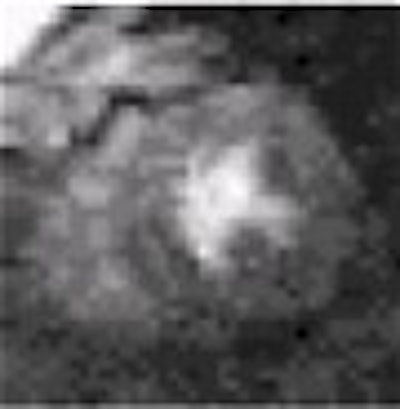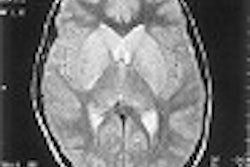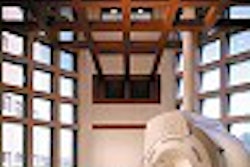
The pathophysiology of syndrome X has long been a mystery -- one that may be unraveling thanks to a team of medical detectives, who, like Sherlock Holmes with his magnifying glass, have used cardiac MR to reveal the secrets behind this painful condition.
Syndrome X is characterized by a puzzling collection of findings: Patients experience typical angina on exertion and have electrocardiographic changes suggestive of myocardial ischemia on exercise stress testing, but they also have normal coronary arteries on angiography. Some researchers have speculated that syndrome X is caused by microcirculatory dysfunction, while others have pointed to metabolic abnormalities.
Conventional myocardial perfusion imaging, whether by SPECT or PET, has shed little light on the puzzle. A study published in The New England Journal of Medicine may provide some answers. Led by Dr. Jonathan R. Panting of Royal Brompton Hospital, London, U.K., the study harnessed cardiac MR's superior resolution to provide a more detailed picture of subendocardial perfusion than is possible with either SPECT or PET imaging (NEJM, June 20, 2002, Vol.346:25, pp. 1948-1953).
Twenty patients with syndrome X and 10 matched control subjects participated in the study. Of the patients with syndrome X, 14 previously had SPECT thallium myocardial perfusion imaging. The results showed normal perfusion in 11 and a mild fixed defect in 3.
All study participants underwent first-pass contrast-enhanced MR perfusion imaging using a T1-weighted gradient-echo sequence and cardiac gating. Perfusion imaging was performed at rest and during a six-minute infusion of the vasodilator adenosine (140 mcg/kg/min). Two short-axis left ventricular slices were acquired every cardiac cycle for 50 beats.
For each region of interest, researchers calculated an index of myocardial perfusion, using the slope of the first-pass signal intensity-time curve, divided by the slope of the ventricular blood pool curve, to compensate for adenosine-related changes in the arterial input function.
When syndrome X patients were compared with the healthy participants, Panting and his colleagues found no significant difference in the transmural myocardial perfusion index, during either rest or stress imaging. When the myocardium was divided into subendocardial and subepicardial regions, however, adenosine infusion uncovered clear differences between the two groups.
In the control group, both subendocardial and subepicardial perfusion indexes increased significantly during adenosine infusion. In patients with syndrome X, however, the subendocardial perfusion index did not increase, whereas the subepicardial perfusion index did.
When adjusted for the heart rate, the subendocardial perfusion index fell in patients with syndrome X, whereas it remained unchanged in healthy controls. Investigators also calculated the myocardial perfusion reserve index -- the ratio of the myocardial perfusion index during stress to that at rest. They found that the ratio of the subendocardial to subepicardial perfusion reserve index was significantly lower in syndrome X patients, when compared to control subjects.
 |
|
Peak myocardial enhancement during first-pass gadolinium MR perfusion imaging in a patient with syndrome X during rest and stress. Stress images show subendocardial myocardial perfusion defect. Images courtesy of Dr. Dudley Pennell.  |
In addition, syndrome X patients were far more likely than healthy controls to develop chest pain during adenosine stress (95% vs. 40%). They usually described it as severe or the worst they had ever experienced, whereas, on average, control subjects described the pain as mild at worst.
The researchers concluded that significant reductions in subendocardial perfusion in syndrome X patients, together with observations of chest pain during stress, support the hypothesis that subendocardial ischemia is at the root of syndrome X.
By Catherine CarringtonAuntMinnie.com contributing writer
July 22, 2002
Copyright © 2002 AuntMinnie.com



















